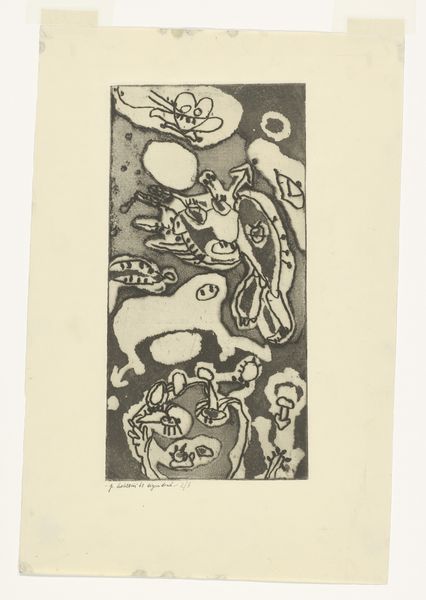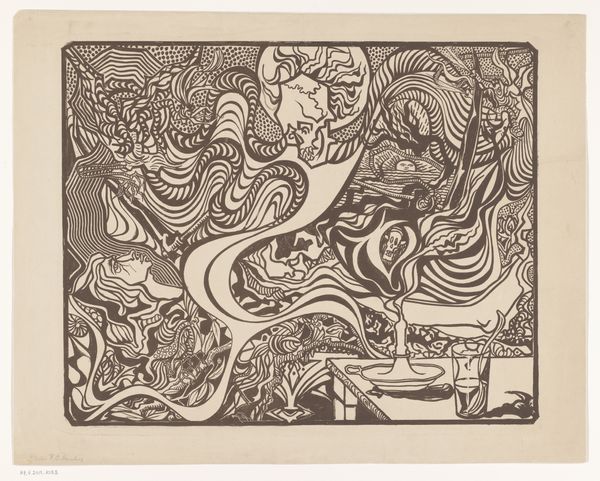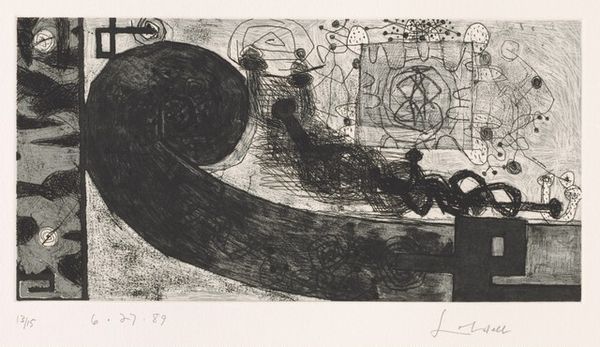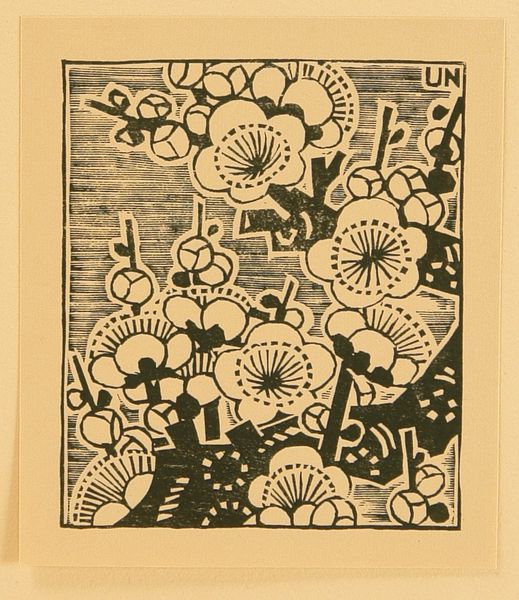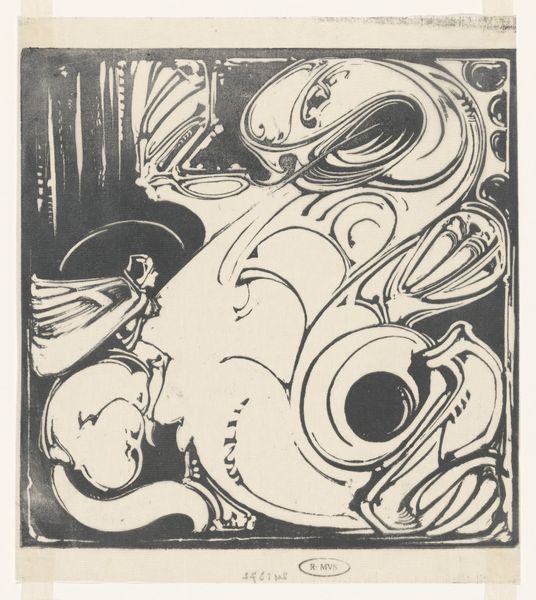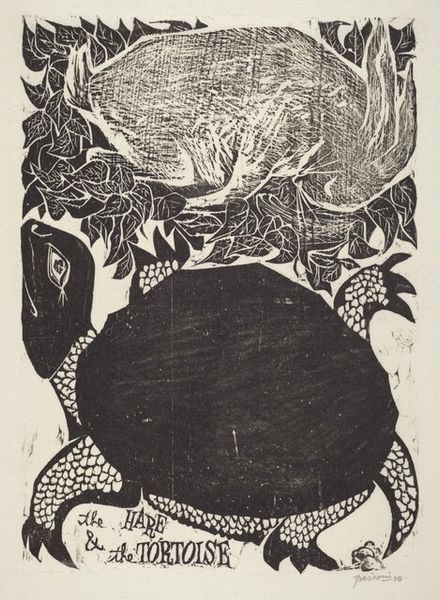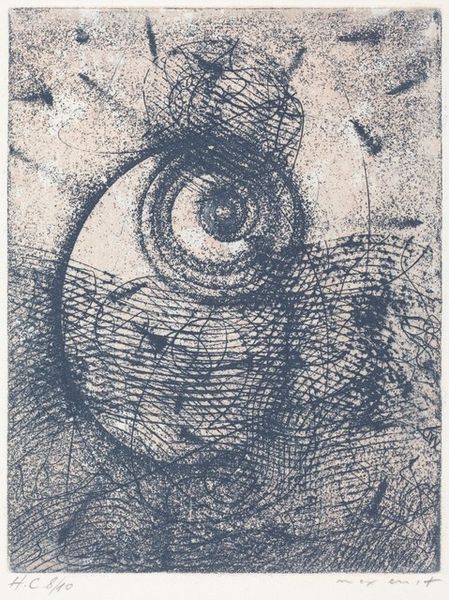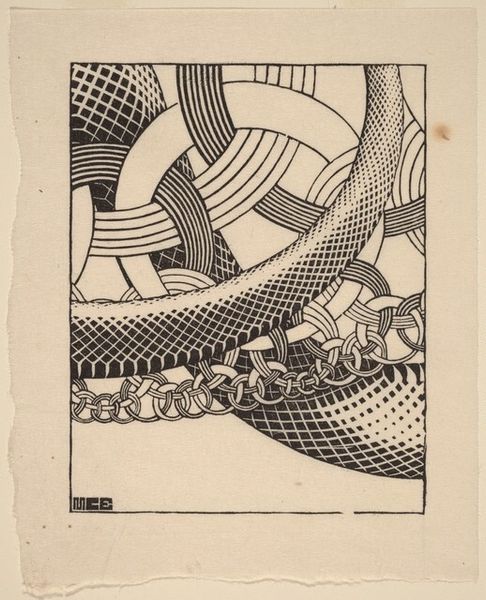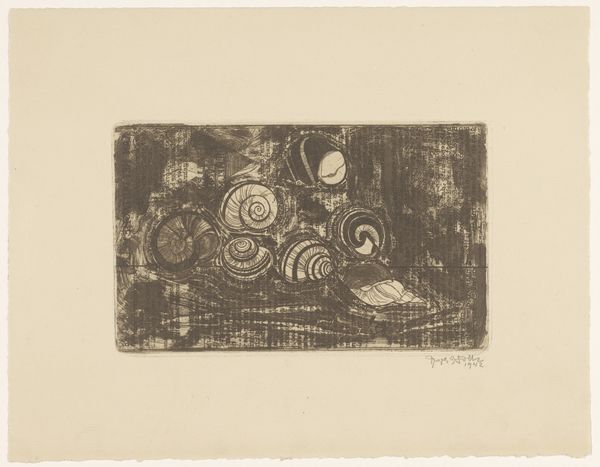
graphic-art, print, woodcut
#
graphic-art
#
contemporary
# print
#
landscape
#
ink line art
#
woodcut
#
abstraction
#
line
Dimensions: image: 75.8 x 100.3 cm (29 13/16 x 39 1/2 in.) sheet: 95.4 x 116.5 cm (37 9/16 x 45 7/8 in.)
Copyright: National Gallery of Art: CC0 1.0
Editor: We're looking at Louisa Chase's "Squall" from 1981, a woodcut print. The swirling forms and high contrast create a really dynamic feeling. What stands out to you about this work? Curator: Immediately, I'm struck by the almost violent energy captured here. Beyond a simple depiction of weather, I see a reflection of broader societal turbulence during the early 80s. Chase, as a female artist, was navigating a male-dominated art world. How might the “squall” be read as a metaphor for the social and political storms she was weathering? Consider, too, the history of landscape art. Editor: I hadn't considered that. It does seem like more than just a landscape. The almost aggressive carving of the woodcut definitely adds to that feeling. What do you make of the abstract shapes, these coil motives? Curator: Exactly! The abstraction is key. Instead of a literal representation, Chase uses symbolic forms. Coils evoke ideas of transformation and resilience – think about the double helix of DNA or even the concept of cyclical historical patterns. Can we view this landscape as a psychic landscape, internal to the artist’s experience, rather than external? Editor: So you are saying that we could view the landscape as a mirror into her emotions. That makes a lot of sense given the time period. Curator: Precisely. It pushes us to consider the artist’s individual experience within a much larger cultural context and political framework, layering social meaning over an expressionist approach. The beauty in “Squall” lies not just in the visual impact but also in what it suggests about navigating chaos. Editor: I see the artwork in a different way now, recognizing these layers really changes how I understand the artist’s perspective. Curator: Hopefully you're recognizing that these socio-historical readings also allow us to relate personally and historically to art.
Comments
No comments
Be the first to comment and join the conversation on the ultimate creative platform.
